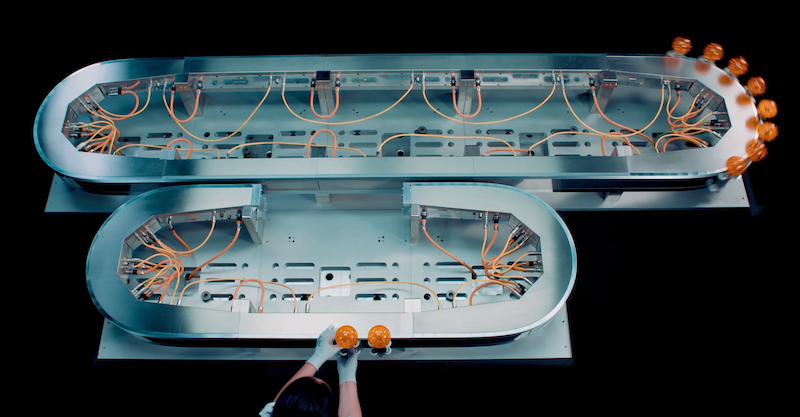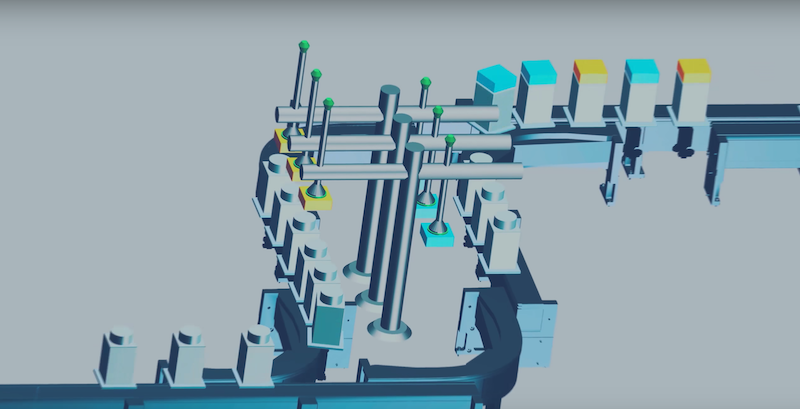In this article, we take a look at adaptive machines and how they differ from traditional manufacturing techniques.
With Industry 4.0 approaching, manufacturing processes and industrial control systems will change dramatically with adaptive machines set to become the next generation production method.
The rapid growth of consumer product developments combined with changing consumer requirements is putting pressure on industrial systems which are commonly geared for one specific processing method. For example, a production line whose purpose is to apply product labels to a bottle will be designed and geared for applying one specific design of label to specific bottle shape. If the production line is expected to label a different bottle then adjustments will need to be made which will take time and therefore negatively impact the rate of production.
Now that consumers are asking for customized products with many product designers wanting to order “batches-of-one” (this means the production of one batch of a product only), it won’t be long before adaptive machines take over.

A screenshot from a video from B&R Automation of adaptive machines being used.
A Rising Demand for Adaptive Machines
Adaptive machines are those that are built using a standard set of building blocks to produce an automated industrial process that is able to adapt to different product requirements on the fly. Taking our previous example of a bottle labeler, an adaptive machine version of this would instead be able to apply any label type (material, adhesive method), to any shape container without requiring any fundamental change to its construction or code.
However, to produce such a machine would require some major changes to how industrial problems are approached as well as the implantation of key technology features to enable a machine to cope with tasks as they change in real-time.
B&R Automation is a company that specializes in the industrial automation market producing industrial PCs, control systems, and motion control. With the rising production of industrial PCs that are often customized by the end consumer with options including CPU, RAM, Hard Drive, and I/O, the total number of possible PC combinations is very high.
B&R also offers custom branding, labels, and logos which means that billions of different combinations that can suddenly have logos and labels in different places on a case that can be of a wide range of shapes and sizes. This is where B&R has developed adaptive machines to enable the construction of such PCs as well as deploying their adaptive techniques to other industrial systems around the world.
The Use for Intelligent Motion
One area that enables the development of adaptive machines is the intelligent use of conveyor systems. While traditional conveyor systems get products from one station to another the next generation of conveyor systems (such as SuperTrak), will not only move items but have them worked upon while in transit.
Technologies that are critical to intelligent conveyor systems include modular linear motors which allow for high accuracy position as well as the ability to control individual pallets on the line. The highly controllable nature of linear motors also allows for synchronous operation whereby items on the line can be timed with other processes thereby improving throughput. But an intelligent movement system also has the ability to adapt to whatever is being transported with one extreme example being the anti-sloshing algorithm developed by B&R.
Typically, a fluid in a container if rapidly transported will slosh around potentially going over the sides and spilling but B&R has successfully demonstrated an algorithm that can detect the fluid inside the container and make adjustments to the motion so that the fluid in the container barely moves even when at high speed.

A screenshot from a video from B&R Automation.
Adaptive Interfaces
Other technologies that will help with the applications of adaptive machines are programming and control platforms that are cross-platform and easy to use. With the wide range of operating systems and computing platforms available it can be difficult to produce an app that can be executed on all simultaneously.
While some solutions do exist (such as WINE for Linux and Python), they often require administrative privileges as well as some level of tech understanding to correctly configure the environment.
The use of web-based software utilizing browsers, HTML5, and CSS, allow for any device to interact with a process while using a familiar interface as well as dramatically reducing set-up times for different processes which may have different interfaces.
Undefined Robots
While not technological advancement, designers of robotic systems can produce adaptive robotic systems by designing robotics with no specific product in mind.
For example, instead of producing robotic heads and tools for one specific purpose, a system could instead use removable heads and parts to allow the system to tackle multiple problems.
OnRobotis an example of a design where robotic systems are built using modular parts that can be adapted and changed to meet different requirements. However, a truly adaptive machine would be able to change in real-time to products moving through the production line with no need for human intervention as and when a different product is encountered.
Examples of Adaptive Machines
Labeling
One example of adaptive machinery being used by B&R is the labeler produced by KOSME (using B&R control technology). The machine setup enables it to apply different label types to different packages as they enter the labeler.
Labels are placed onto rolls that are housed in a custom label holder (as this needs to be built to the label type) but multiple label types are loaded simultaneously. Then, as the container type is fed the appropriate label is applied using the same machinery process which dynamically adjusts to the requirements.
Max-Palet
Another example of how adaptive machines can benefit production lines is the Max-Palet system produced by Tavil. The automated pallet loading system is able to fill and close four different sized cases on-the-fly with the capability of changing case size in 4 seconds minimizing production stalls due to changes.
The system is able to hold up to 99 recipe-driven case formats as well as lid formats to provide maximum customization to the end packing. One advantage that such a system has is that with delivery companies charging by size as well as weight a production line can make real-time changes to adapt.
Adaptive machines may sound complex and futuristic but all in all an adaptive machine is one which can change itself in real-time to produce a custom product. Movement technologies can change their size to hold different sized items while arms can change their tooling and position to adapt to the product coming through the production area.
At the same time, the use of flexible programming methods can eliminate the need for dedicated machinery which is tasked with one specific construction technique and each product would be as if it were made by hand because it effectively would be.
What are some ways you use adaptive machines?
Copyright Statement: The content of this website is intended for personal learning purposes only. If it infringes upon your copyright, please contact us for removal. Email: admin@eleok.com
